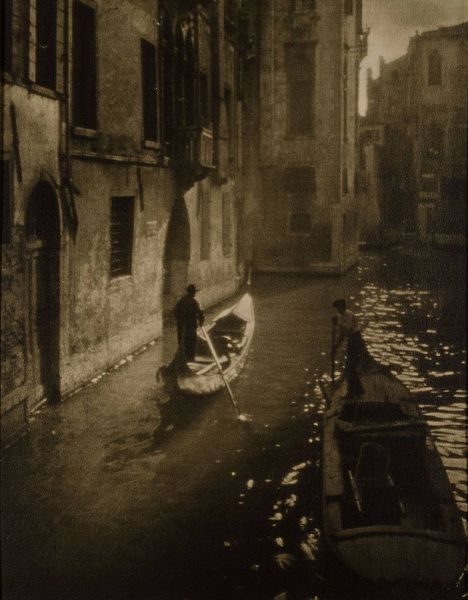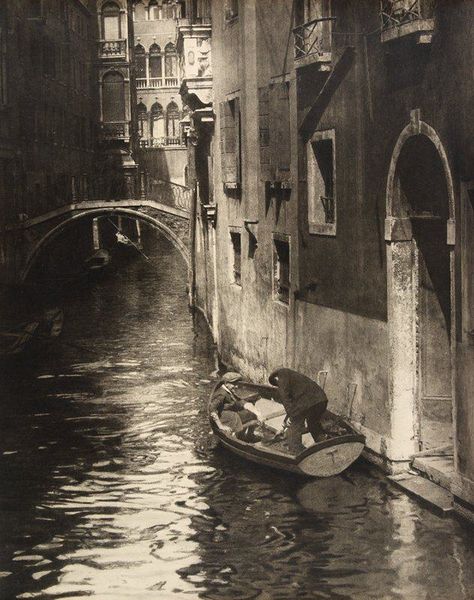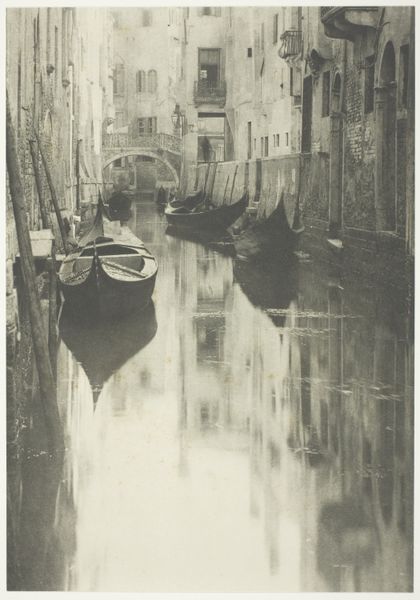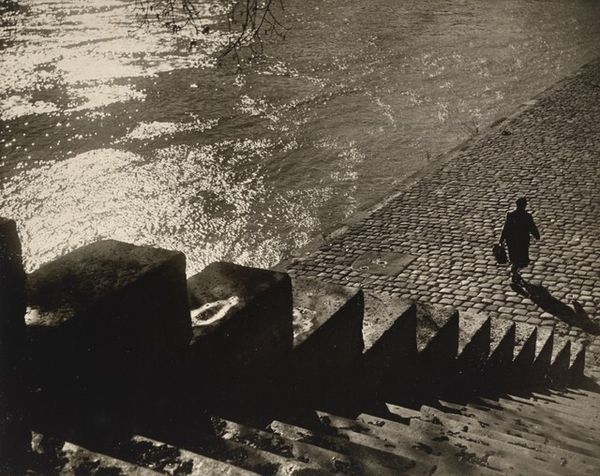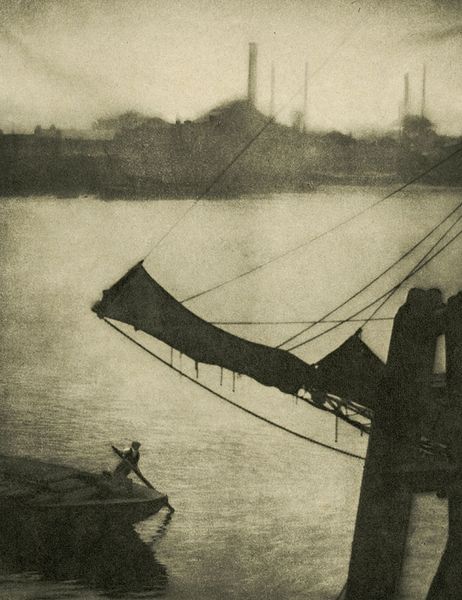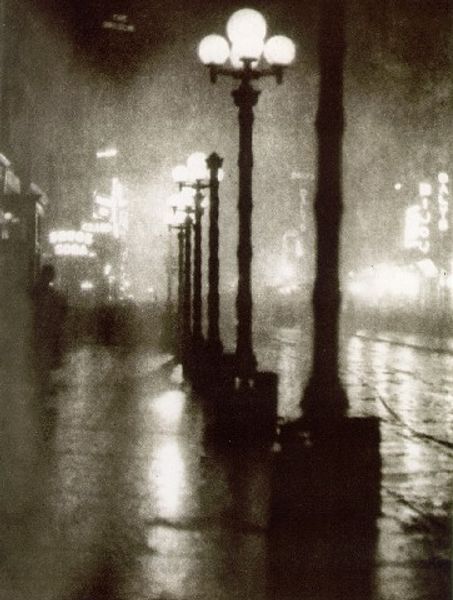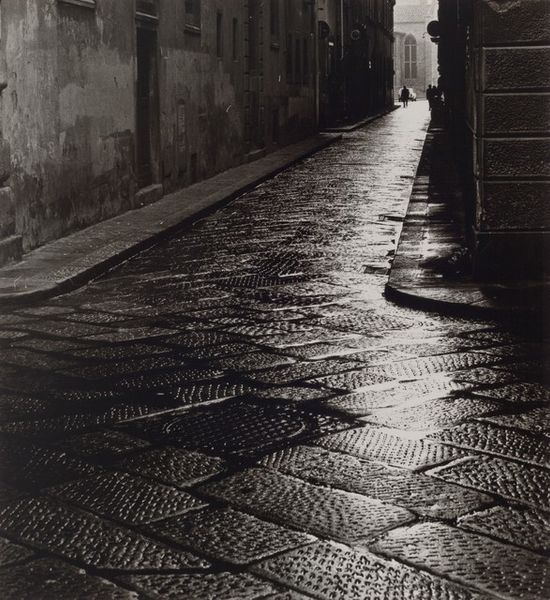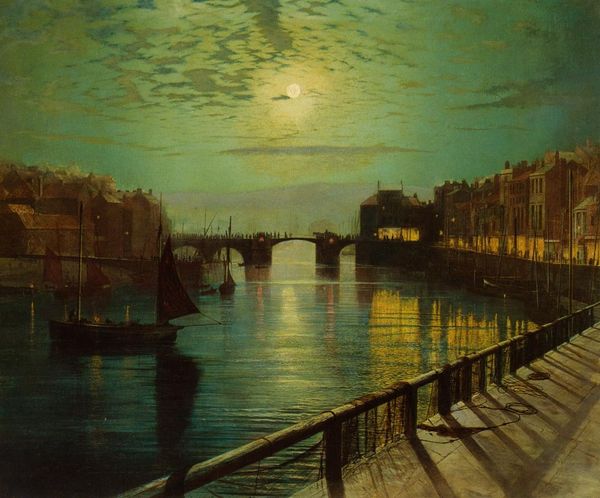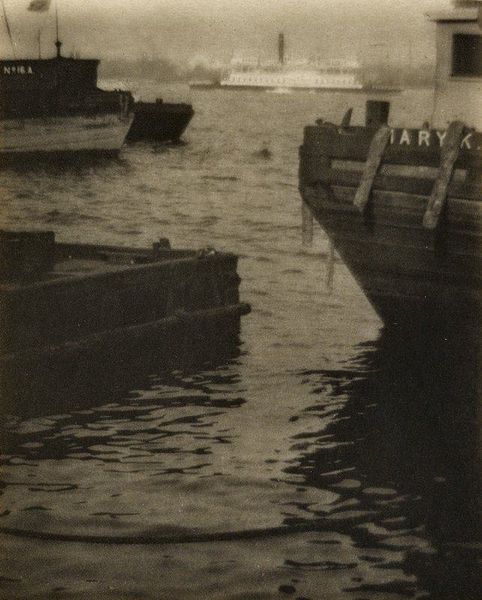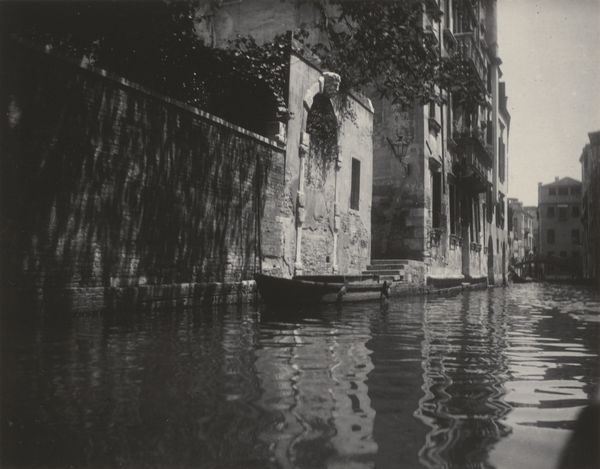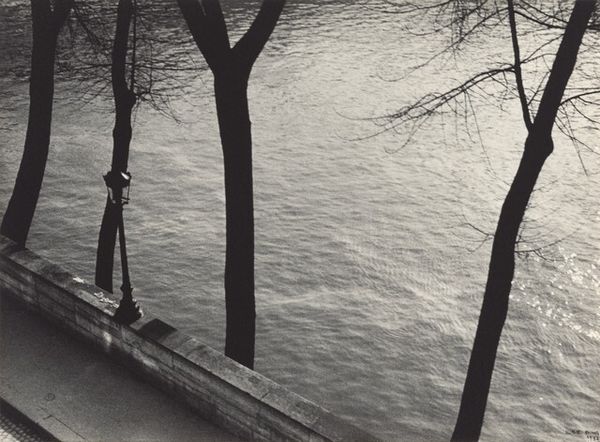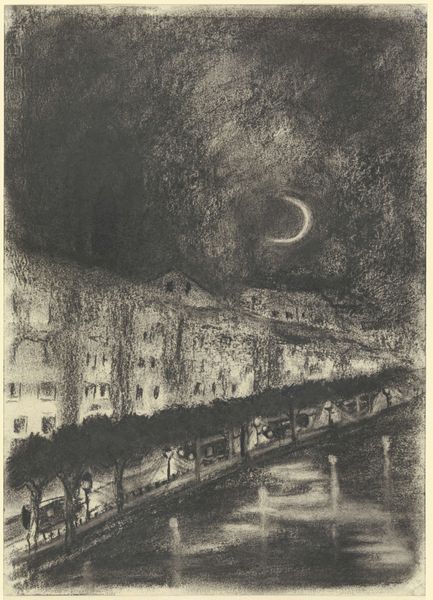
Ponte Vecchio--Florence late 19th-early 20th century
0:00
0:00
photogravure, print, photography
#
photogravure
#
pictorialism
# print
#
impressionism
#
landscape
#
charcoal drawing
#
photography
#
cityscape
#
charcoal
#
graphite
#
realism
Dimensions: 8 1/2 x 6 5/16 in. (21.59 x 16.03 cm) (image)
Copyright: No Copyright - United States
Curator: It feels shrouded, secretive, almost like a hidden memory rising from the depths. Editor: Indeed. We're looking at "Ponte Vecchio--Florence," a photogravure created by Marshall R. Kernochan in the late 19th or early 20th century. The photogravure process gives it that wonderfully velvety texture. Curator: Yes, and it accentuates the dreamlike quality. The bridge is such a strong symbol – a crossing, a connection. But here, it’s veiled in shadow, leading to an unknown, luminous destination. Editor: The Ponte Vecchio itself has such a rich history. Originally lined with butcher shops, it was later taken over by jewelers. This image, however, steers clear of those commercial aspects, focusing instead on its timeless architectural presence. It almost monumentalizes a romantic vision. Curator: Absolutely. Water always represents the unconscious, doesn't it? And its mirroring surface blurs the already indistinct architecture above. It’s about an interior space, a psychological landscape, not a literal depiction of Florence. What could a journey by boat and the passage under the bridge suggest symbolically in your interpretation? Editor: Perhaps a quiet rebellion against the rise of industry and its impacts on cityscapes. Think of the art world in the early 20th century and all its manifestos for change and societal progress. This harkens to a yearning for tradition perhaps? The solitary figures offer an introspective counterpoint to urban progress. Curator: A very good point. This treatment, even the soft focus, almost seems to idealize and preserve the image in defiance of modernity's progress, securing its symbolic value. I find the enduring iconography of historical spaces fascinating. Editor: It's a photograph made to look like an etching, striving for the painterly aesthetic so sought-after by pictorialists. But it's in museums that these debates about art, progress and traditions continue to hold meaning today. Curator: So true. Every viewing reactivates and potentially reshapes our understanding of them. Editor: It does. Each time. Well, thanks for lending your insightful lens today. Curator: The pleasure was mine. Until next time.
Comments
No comments
Be the first to comment and join the conversation on the ultimate creative platform.
